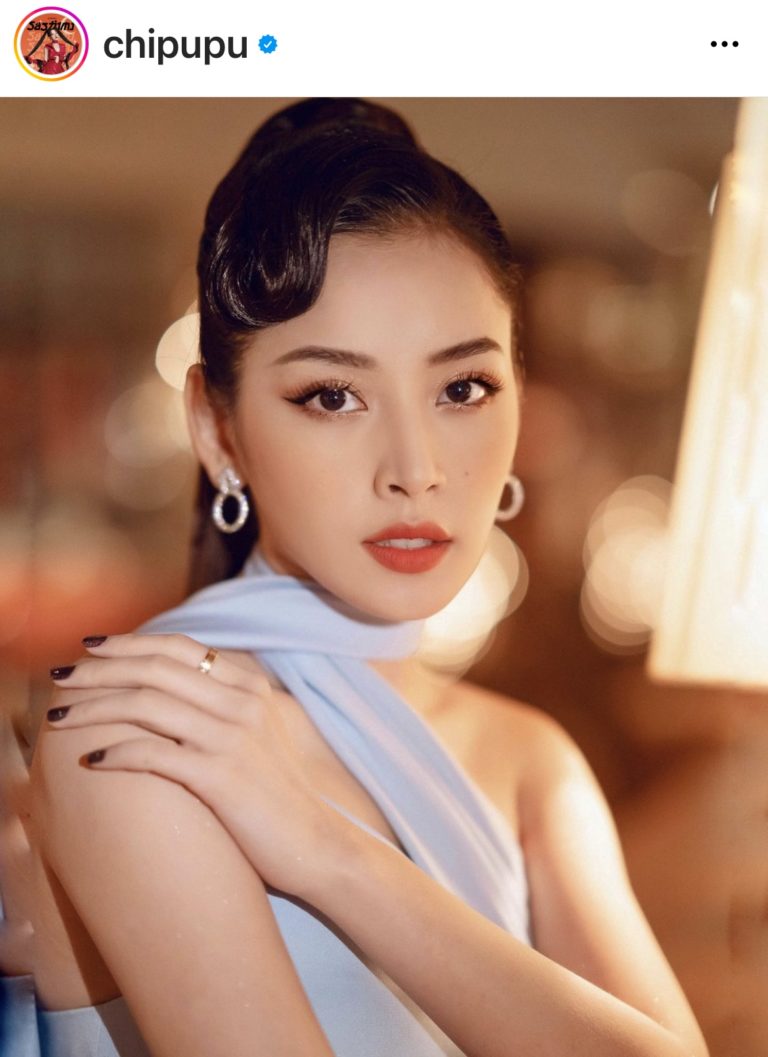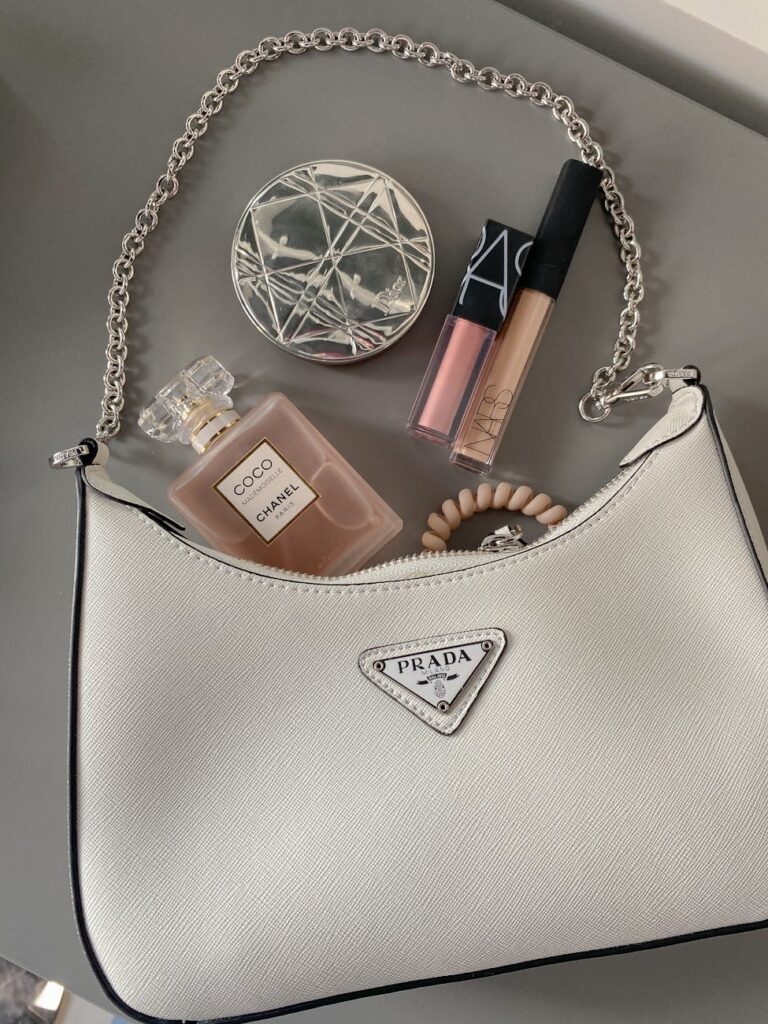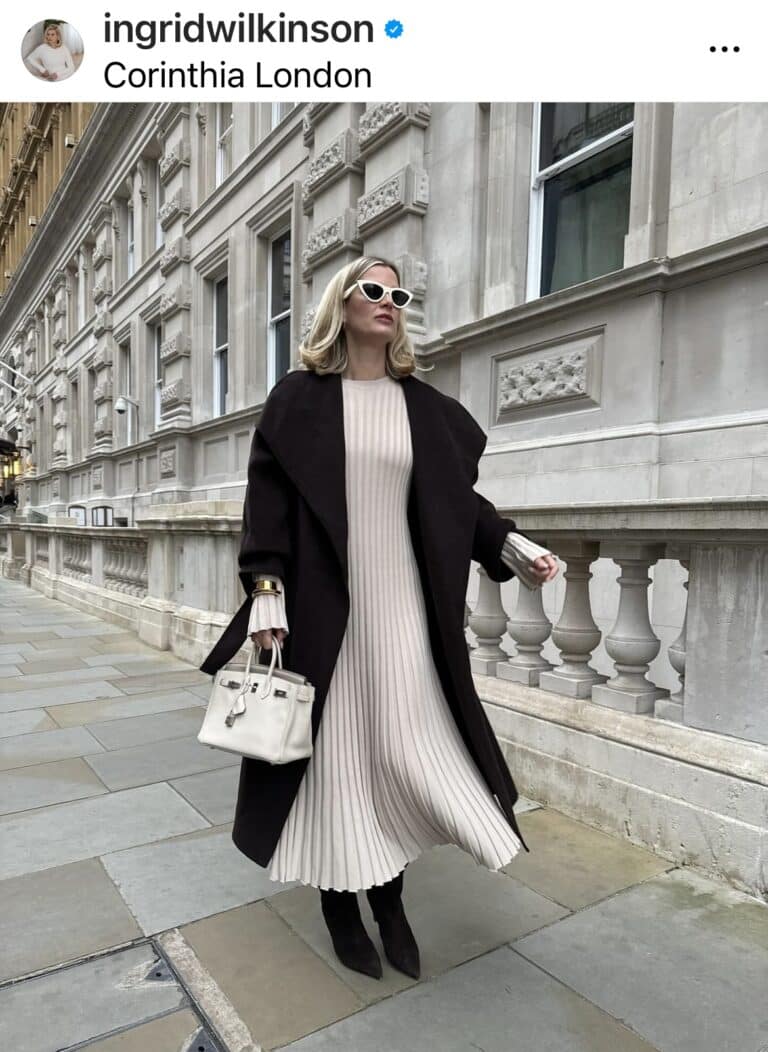Why Depth Comes Before Temperature in 12 Seasonal Color Analysis
1 2 Seasonal Color Analysis: Let’s decode it. Have you ever tried on a color that looked fantastic on your friend, only to find it completely washes you out? The secret to understanding which colors make you shine often lies in 12 Seasonal Color Analysis, a system designed to match your natural coloring to a specific palette of hues. This method categorizes individual colorings into “seasons”—Spring, Summer, Autumn, and Winter. But to accurately find your season, analysts follow a specific order of operations. One of the most critical principles in modern 12 Seasonal Color Analysis is determining your color depth before anything else.
So, why does depth, the lightness or darkness of a color, take precedence over temperature, its warmth or coolness, in 12 Seasonal Color Analysis? Let’s explore the fundamental building blocks of this color system and discover why this order is key to unlocking your most flattering palette.
- Understanding the Dimensions in 12 Seasonal Color Analysis
- Depth: The Foundation of Your Color Story in 12 Seasonal Color Analysis
- Temperature: Refining the Palette in 12 Seasonal Color Analysis
- The 12 Seasonal Color Analysis Summary
- The Sterling Color Quality Method: Moving Beyond Seasonal Color Analysis
Understanding the Dimensions in 12 Seasonal Color Analysis
12 Seasonal Color Analysis evaluates three primary dimensions of your natural coloring:
- Depth (or Value): This refers to how light or dark your features are. Do you have fair skin, light hair, and bright eyes (light)? Or do you have dark hair, deep eye color, and richer skin (dark)? Many people fall somewhere in the middle.
- Temperature (or Hue): This is about the undertone of your skin, hair, and eyes. Are you predominantly warm (golden, peachy, yellow-based) or cool (rosy, blue-based, pinkish)?
- Chroma (or Clarity): This dimension measures the saturation or intensity of your coloring. Are your features bright and clear, or are they muted and soft?
Traditional color analysis often tried to fit people neatly into one of four seasons. However, the more nuanced 12 Seasonal Color Analysis system recognizes that one dimension is usually more dominant than the others. Prioritizing these dimensions correctly is the difference between a good color match and a perfect one.
Depth: The Foundation of Your Color Story in 12 Seasonal Color Analysis
In the world of 12 Seasonal Color Analysis, depth is considered the most impactful and immediately noticeable characteristic of your coloring. Think of it as the foundational contrast level of your appearance. When you wear a color that is too light or too dark for you, the effect is instantly jarring.
If your natural coloring is deep—rich, dark hair, deep eyes—wearing pale, pastel colors can make you look drained and insignificant. The light colors simply lack the visual weight needed to harmonize with your features. Conversely, if you have light coloring—blonde hair, fair skin, light eyes—and you wear a very dark color like black or charcoal grey, the color can overwhelm you. It creates a harsh line and can make you appear tired or severe because it overpowers your delicate coloring.
Because the wrong depth creates such a strong visual imbalance, it’s the first thing an analyst seeks to identify in 12 Seasonal Color Analysis. Getting your depth right establishes the primary range of light-to-dark values you can wear successfully. It’s the framework upon which the rest of your palette is built. If a color’s value is in harmony with yours, it will look appropriate even if the temperature isn’t a perfect match. A color that clashes in depth, however, will almost always look “off.”
Temperature: Refining the Palette in 12 Seasonal Color Analysis
Once your dominant depth is established (Light, Deep, or somewhere in between), the next step in 12 Seasonal Color Analysis is to determine your temperature. Are you a “Light Spring” (warm) or a “Light Summer” (cool)? Are you a “Deep Autumn” (warm) or a “Deep Winter” (cool)?
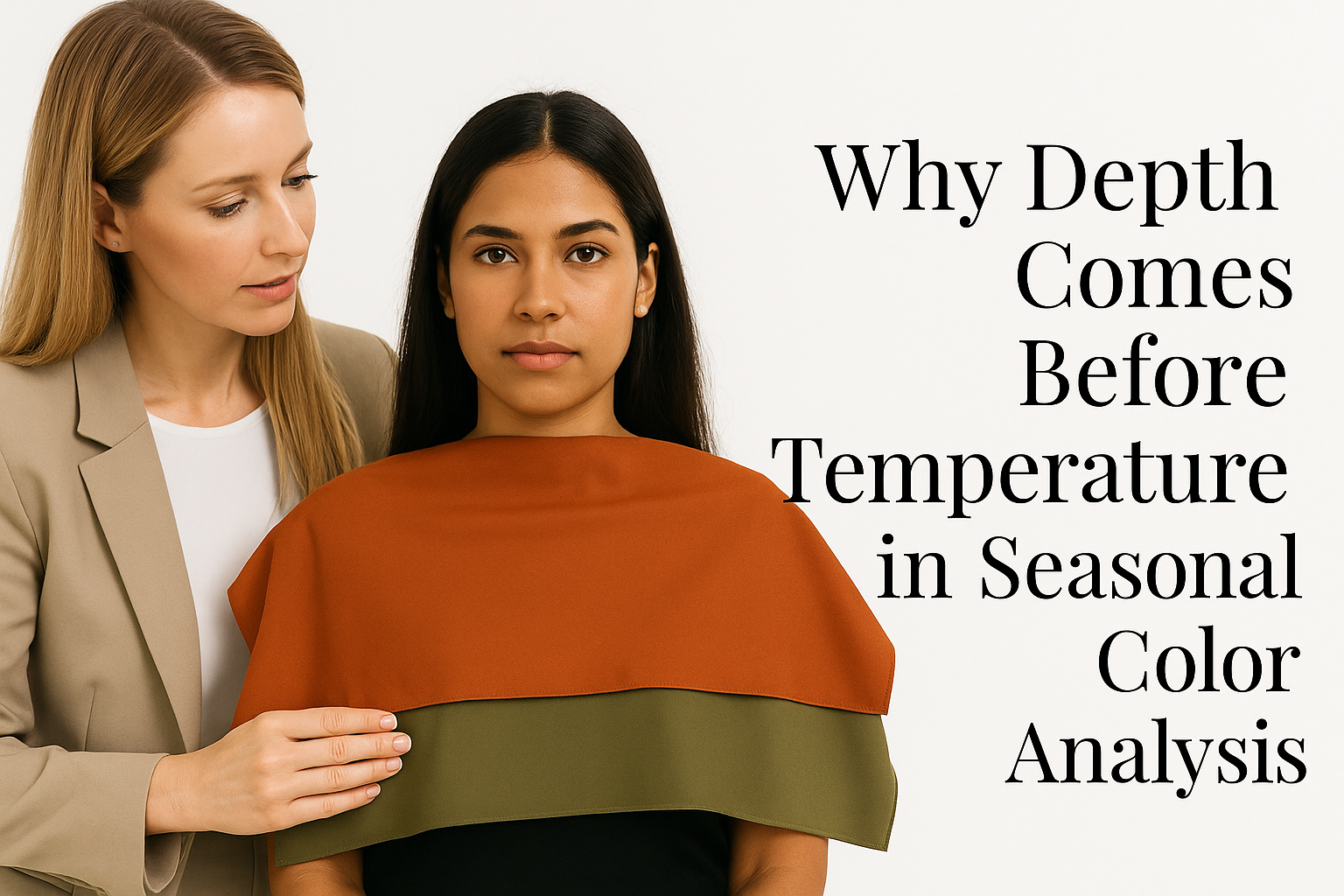
Temperature reflects the undertone that gives your coloring its unique warmth or coolness. Someone with warm undertones will find that colors with a yellow base, like peach, olive green, and terracotta, make their skin glow. In contrast, a person with cool undertones will look their best in blue-based shades, such as fuschia, sapphire, and lavender.
While important, temperature is a more subtle influencer than depth. Wearing a slightly-too-warm or slightly-too-cool color is often less distracting than wearing a color that is completely wrong in its lightness or darkness. For example, a person with Deep Winter coloring (deep and cool) might be able to borrow a dark-wash denim from the Deep Autumn palette (deep and warm) without it looking terrible. The shared “deep” quality creates enough harmony. However, if that same Deep Winter tried to wear a pale mint green from the Light Summer palette, the lack of depth would be immediately apparent and unflattering. This is not how we evaluate individuals using the Sterling Color Quality System. We discuss depth but don’t start with depth.
By first identifying your correct depth range with 12 Seasonal Color Analysis, you narrow down the possibilities significantly, making it much easier to fine-tune the palette with the correct temperature.
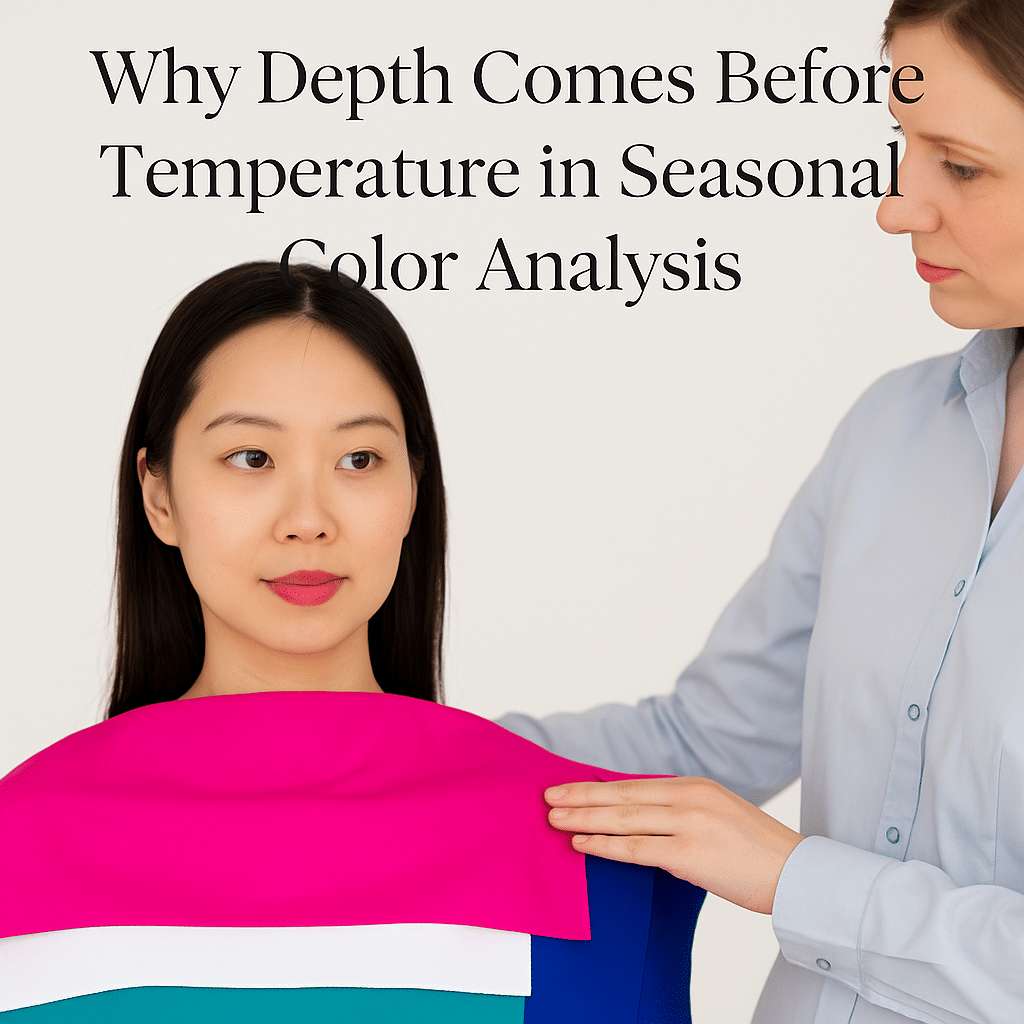
The 12 Seasonal Color Analysis Summary
The Core Idea
The 12-season model is just a way of breaking down the 4-season system (Spring, Summer, Autumn, Winter) into smaller subcategories by looking at which trait is dominant in someone’s coloring.
There are 3 traits:
- Value (Light vs. Dark)
- Hue (Warm vs. Cool)
- Chroma (Muted vs. Bright/Clear)
How It’s Supposed to Work
- Find the dominant trait (the one that “jumps out” first).
- If someone looks very Light → they’re either Light Spring (warm) or Light Summer (cool).
- If someone looks very Dark → they’re either Deep Autumn (warm) or Deep Winter (cool).
- If someone looks very Bright → they’re either Bright Spring (warm) or Bright Winter (cool).
- If someone looks very Muted/Soft → they’re either Soft Autumn (warm) or Soft Summer (cool).
- Add the secondary trait (warm/cool or muted/bright) to refine.
- Example: someone who’s Dark + Warm → Deep Autumn.
- Example: someone who’s Bright + Cool → Bright Winter.
Why It Feels Off
- The language is inconsistent: “warm soft” vs. “soft warm” → it’s the same thing but written differently.
- The hierarchy isn’t always clear, which makes it look like a jumble of descriptors instead of a logical system.
- It was designed to feel more “nuanced” than the 4 seasons, but the tradeoff is that it often confuses both clients and students.
The Sterling Color Quality Method: Moving Beyond Seasonal Color Analysis
While depth-before-temperature is the foundation in most 12 Seasonal Color Analysis systems, this method has often left students and clients confused—particularly when you color your hair or like to experiment with different looks. What happens if you love to change your hair color regularly? How can your color season stay consistent? This is a challenge many find frustrating with the classic 12 Seasonal Color Analysis approach.
That’s why Sterling Style Academy’s Sterling Color Quality Method was developed. Our system accommodates real life: clients who experiment with hair color, multi-ethnic features, and those who don’t fit neatly into 12 Seasonal Color Analysis boxes. Hair stylists and image professionals love our method because it adapts, giving you more options and clarity—never leaving you guessing.
We offer a consistent, clear framework for evaluating not just swatches, but how to translate those evaluations for real people, making client consultations reliable and repeatable. As you progress through our system, you’ll gain the confidence to place clients accurately and articulate exactly which season and palette is most flattering—every time.
The Professional Tier in Color Analysis Training
Sterling Style Academy frames our courses as career pathways, not just “fun workshops.” With a focus on certification, consulting, global recognition, and a return on investment, our multi-day programs are designed to build career-ready skills beyond 12 Seasonal Color Analysis. A one-day class can be an introduction, but true mastery and professionalism comes from our comprehensive programs.
Leverage our International Authority
Sterling Style Academy stands out as the only globally recognized Color Analysis training program, with graduates in over 20 countries and a presence in Dubai, Miami, New York, Paris, Singapore, Madrid, and Bangkok. This international reach gives you credential that are respected and valuable anywhere your career takes you.
Simplifying Color Analysis vs. Gimmicks
While some systems inundate you with dazzling props and endless tools, the Sterling Color Quality Method is different. We teach elegant mastery—focusing on understanding and application instead of overwhelming you with unneeded gimmicks or clutter. Clarity and professionalism drive our results, so you can deliver superior service with every client.
Ready to discover a system that actually makes sense, adapts to real people, and removes the confusion from color analysis? Take our online color analysis course and experience the Sterling Color Quality Method for yourself.. You’ll gain career-ready skills, global recognition, and the confidence to deliver professional color consulting anywhere in the world. Or register for one of our in-class color analysis training programs in New York, Miami, San Francisco, Singapore and Dubai.
In this article, we explored the logic and structure behind 12 Seasonal Color Analysis, why depth is always prioritized before temperature, and how the Sterling Color Quality Method offers a modern, consistent, and adaptable alternative. If you’re ready for a smarter, more professional approach to color, Sterling Style Academy is your pathway to global expertise.



